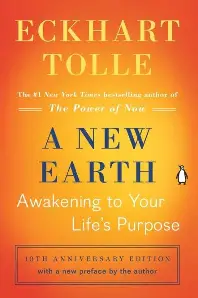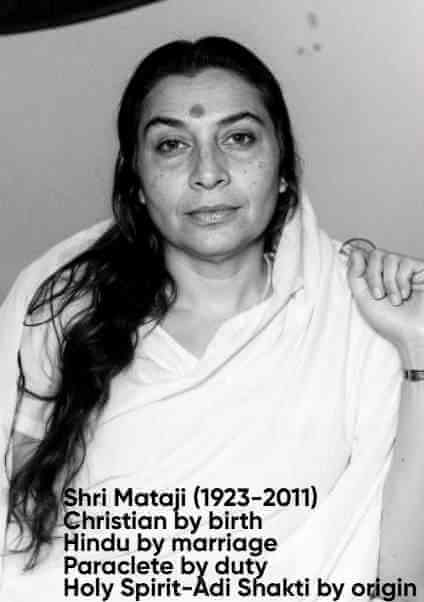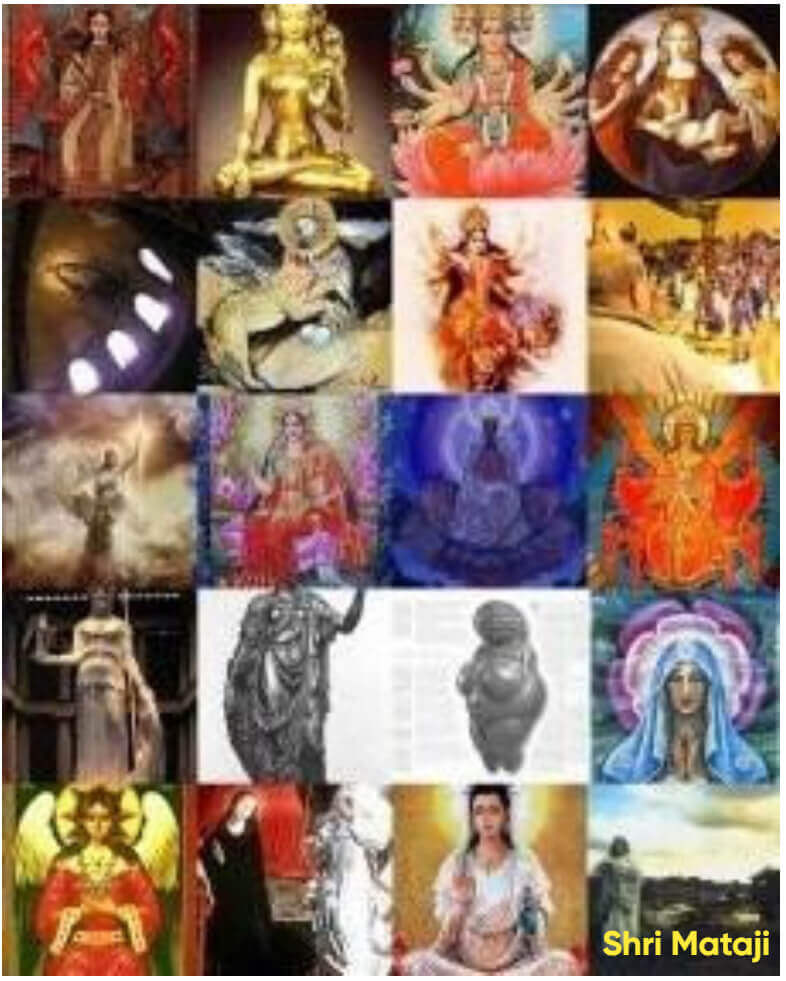Eckhart Tolle's Teachings and Shri Mataji's Self-Realization: A Perfect Harmony
This page affirms the profound harmony between Eckhart Tolle’s teachings on presence and Shri Mataji Nirmala Devi’s gift of Self-realization. Both point to the same truth: liberation is found in the Now, through the awakening of inner consciousness. While Tolle guides seekers to stillness and awareness, Shri Mataji activates the Kundalini, granting direct experience of the Spirit. This convergence is not coincidence—it is prophecy fulfilled. The Divine Feminine has incarnated to deliver the promised Paraclete, and the age of collective awakening has begun. The silence of the present moment is the doorway to the eternal Self.
Introduction
In an era of spiritual seeking, Eckhart Tolle and Shri Mataji Nirmala Devi offer complementary paths to inner awakening. Tolle, author of The Power of Now, advocates living in the present moment to transcend the ego, while Shri Mataji, founder of Sahaja Yoga, provides a practical technique for Kundalini awakening leading to self-realization. Their teachings harmonize in rejecting ego-driven identity, embracing stillness, and fostering unity with the divine.
As Tolle states, "Awareness of Being is self-realization," echoing Shri Mataji's view that self-realization connects individuals to the all-pervading cosmic energy.
The Essence of Self-Realization: Beyond Content to Being
Central to both is distinguishing essence from content. Tolle warns against confusing personal history—name, roles, thoughts—with true identity: "All content is subject to the law of impermanence... if you try to discover who you are within the dimension of content, you will encounter frustration again and again." He points to the "underlying sense of I Am, which is consciousness itself," the eternal essence immune to loss.
Shri Mataji's self-realization mirrors this through Kundalini awakening, the dormant energy at the spine's base rising to enlighten the subtle system. This spontaneous process, achievable en masse without prior practice, grants "thoughtless awareness" or mental silence, where one witnesses absolute truth. As Shri Mataji taught, "You are not this body, this mind, these emotions... but you are the pure Spirit." Both paths dissolve identification with form, revealing the formless essence—the Tao for Tolle, the Adi Shakti for Shri Mataji—leading to bliss and guidance beyond the mind.
Dissolving the Ego: Surrender Without Losing Individuality
Ego dissolution evokes fear of losing individuality, but both teachers clarify it preserves true self. Tolle explains: "You will lose everything except yourself... Awareness of Being is true happiness." Post-awakening, one retains awareness of the individual "I Am" as consciousness, not egoic constructs; after death, this essence persists eternally.
In Sahaja Yoga, ego (on the right channel) creates false individuality, but self-realization balances it with superego, fostering collectivity: "Once you start growing in your self-realization, you develop such a personality that you see the whole world as one." Shri Mataji viewed ego as an obstacle bypassed via central channel ascent, uniting individual spirit with the universal at Sahasrara chakra. Individuality evolves into enlightened expression, not erasure—harmonizing Tolle's "universal dance of forms" with Shri Mataji's collective consciousness.
The Power of Presence and Stillness
Tolle's core practice—conscious presence—ends ego's tyranny: "When you become conscious of the present moment, all the old structures of your mind cease to operate." Stillness births creativity and divine intelligence, as "true creativity flows only from stillness."
Shri Mataji's thoughtless awareness achieves this via Kundalini, silencing mental noise for "effortless meditation." Both decry ego's fear of silence; post-realization, one embodies peace and power, applying teachings daily for happiness deeper than transient joy. As Tolle notes, it transcends psychology's ego-empowerment, aligning with Shri Mataji's view that psychology aids recognition but not transformation.
Transformation and Everyday Application
Awakening ends self-inflicted suffering—anger, anxiety—fostering empathy: "Everywhere you encounter yourself," per Tolle. Shri Mataji echoed this unity with all life forms as manifestations of eternal Life. Both see gradual or sudden shifts; Tolle notes processes via teachings, Shri Mataji enables en masse realization, free and universal.
Their shared purpose: enlightened humanity. Tolle's Eckhart Teachings promotes "union with the Divine," akin to Shri Mataji's global Sahaja centers in 140+ countries, healing via meditation.
Conclusion
Tolle's presence and Shri Mataji's self-realization converge in ego transcendence, essence realization, and collective awakening. Avoiding content traps, both guide to impermanent-free being, preserving individuality as conscious essence. This harmony substantiates their perfect alignment, offering a unified path to peace amid chaos. Practitioners integrating both experience profound synergy, embodying the new earth.
References
- Tolle, E. (Various Q&A excerpts provided in query).
- Shri Mataji Nirmala Devi. (Teachings from Sahaja Yoga sources).
- Comparative discussions on stillness and thoughtless awareness.
Eckhart Tolle's Teachings and Shri Mataji's Self-realization are in perfect harmony
 "The main trap to avoid is to confuse content and essence. The ancient dictum "know thyself" points towards essence, your true identity. Your name, nationality, religion, your opinions, political views, material possessions, likes and dislikes, desires, fears, ambitions, as well as your view of yourself as a success or failure, good or bad — in fact your entire personal history and your thought processes... all that is content. All content is subject to the law of impermanence (as the Buddha already discovered 2600 years ago), and if you try to discover who you are within the dimension of content, you will encounter frustration again and again. Or, as the Buddha put it, you will suffer. You suffer because you derive your sense of identity exclusively from the content of your life.”
"The main trap to avoid is to confuse content and essence. The ancient dictum "know thyself" points towards essence, your true identity. Your name, nationality, religion, your opinions, political views, material possessions, likes and dislikes, desires, fears, ambitions, as well as your view of yourself as a success or failure, good or bad — in fact your entire personal history and your thought processes... all that is content. All content is subject to the law of impermanence (as the Buddha already discovered 2600 years ago), and if you try to discover who you are within the dimension of content, you will encounter frustration again and again. Or, as the Buddha put it, you will suffer. You suffer because you derive your sense of identity exclusively from the content of your life.”
"The work of Eckhart Teachings is in response to the urgent need of
our times: the transformation of consciousness and the arising of a
more enlightened humanity. We organize Eckhart Tolle's Talks,
Intensives and Retreats throughout the world. We also record,
license, publish and distribute CDs and DVDs of his teaching events.
In addition to supporting Eckhart Tolle and the dissemination of his
teaching, we are committed and dedicated to serving the new
consciousness and awakening of all humans on the planet. Behind the
external form of what we do, and behind the business structure, lies
the company's and our true purpose: the union with the Divine.”
https://eckharttolle.com/eckhart_teachings
Question:
Dissolving the ego is quite a scary business. When it comes to
complete surrender, it is actually quite difficult to do because
everyone wants to be an individual. Is individuality lost? Is there
any awareness of an individual self after awakening and what about
after physical death?
Answer:
When you say "individual self", I assume you mean who you are in your
essence, your true identity. What is the essence of who I am? Is it
the flesh and bones of my body? Is it my memories, my thoughts, my
emotions, social roles? It is none of the above. Who I feel to be
in my essence - what some people call "my individuality" or "my
identity", is felt to be something very precious, but what exactly is
it? It is the underlying sense of I Am, which is consciousness
itself. It is the only thing I cannot lose because it is who I am.
So we could put it like this: you will lose everything except
yourself.
You say: "everyone wants to be an individual.” I would just say:
everyone wants to be. Awareness of Being is self-realization.
Awareness of Being is true happiness.
Question:
You realized the "truth" (I am referring to the permanent shift of consciousness you have achieved) with no help from others. Do you know of anyone who achieved the same by following your teaching through books/tapes?
Answer:
For most people, the shift is not a single event but a process they undergo. It is a gradual disidentification from thoughts and emotions through the arising of awareness. Many people, through coming into contact with the teaching, are now undergoing this process, and some are already free.
Question:
I have been wanting to ask you this for months- What are your thoughts on the New Testament? It appears that you believe certain parts were add-ons, or apart from the essence of the teaching. Are there any parts in particular? And why?
Answer:
The New Testament contains deep spiritual truth as well as distortions. Those distortions are of two kinds. Some are due to a misunderstanding of Jesus' teaching, others arose because people had an agenda (wanting to fit Jesus into their preconceived notions, wanting to make converts etc.). At some point, if there is another book, I may write about this in more detail. But you can find all this out for yourself. When you are present, you access your inner knowing and you will sense what is true and what was added on or distorted.
Question:
Is there any way in which your spiritual teachings may be applied to everyday life? Can your teachings make us any happier today? How?
Answer:
At the core of the teachings lies the simple practice of living in the present moment. It is true, of course, that everybody already lives in the present moment, but unfortunately they haven't noticed, and they pretend that past and future are more important than now. In reality, your entire life unfolds in the space of now. Nothing exists outside of the now. So I am talking about making the present moment conscious. That is also the quickest way beyond ego. Thinking about past and future keeps feeding the ego. Past and future have no existence except as thought forms in your mind, and when you become conscious of the present moment, all the old structures of your mind cease to operate. The mind is then no longer your master, but your servant. A new state of consciousness arises: Presence. Instead of denying the now — which is ultimately the ego's denial of life — you accept it, acknowledge it, make it your friend instead of your enemy. When you live in alignment with the now, you embody peace, but you also embody power, the power of life itself. It goes deeper than happiness.
Question:
Why are we so afraid of stillness and silence? What can be created from them?
Answer:
We are not afraid of stillness and silence, but the ego in us is. The ego arises out of incessant mental noise. We love stillness, because it is inseparable from who we are in our essence. Whenever you enjoy anything deeply, whenever you experience beauty, love, intense aliveness or creativity, stillness will be there in the background, even though you may not be aware of it directly. True creativity flows only from stillness. When stillness becomes conscious, the spiritual dimension enters your life and you begin to be guided by an intelligence far greater than the human mind.
Question:
One of the great principles of philosophy and psychology is: "Know yourself.” How can I know who I really am? Which traps should I avoid? And which tools should I use?
Answer:
The main trap to avoid is to confuse content and essence. The ancient dictum"know thyself"points towards essence, your true identity. Your name, nationality, religion, your opinions, political views, material possessions, likes and dislikes, desires, fears, ambitions, as well as your view of yourself as a success or failure, good or bad — in fact your entire personal history and your thought processes... all that is content. All content is subject to the law of impermanence (as the Buddha already discovered 2600 years ago), and if you try to discover who you are within the dimension of content, you will encounter frustration again and again. Or, as the Buddha put it, you will suffer. You suffer because you derive your sense of identity exclusively from the content of your life. Another word for content is form. That is what the ego is: identification with form. When you stop identifying with form, the ego is no longer in control. So, first realize who you are not (form) and what's left is who you are. But then there is nothing left, you might say, but this is not so. What's left is not form, but essence, which we could also call inner space. The space out of which all forms come and into which they disappear. The ancient Chinese philosophers called it the Tao. It is beyond time. It is the eternal, the primordial I am.
Question:
Many trends in psychology work to empower individuality, personal differences, developing one's singularity and uniqueness, to develop one's strengths and abilities through willpower. Is that compatible with the idea of transcending the ego? Without ego, what is character or personality reduced to? Is psychology compatible with spirituality?
Answer:
It is perfectly possible to develop strengths and abilities without identifying with them and without inner dependency on the future outcome of your activity. When you work without ego, there is a flow of energy that is actually extremely enjoyable. When you enjoy the present moment, the future outcome is not of primary importance. Ego induced activities reduce the present moment to a means to an end and are therefore stressful and ultimately frustrating.
As regards psychology, it alone will not get us beyond the dysfunction of the human mind and cannot bring about the profound inner transformation in human beings that is necessary if mankind is to survive. Psychology is helpful, however, in teaching us how to recognize the ego in its many disguises, so that it can no longer deceive us and take us over again and again. What is personality without ego reduced to? The universal dance of forms — fascinating, but ephemeral - as fleeting as a cloud.
Question:
What do we experience when we connect with our real self? How does that experience change the way we live our own life?
Answer:
You no longer create suffering for yourself. Anger, resentment, regret, grievances, anxiety, guilt, etc, which are all inseparable from the egoic state of consciousness, no longer arise. And when you no longer create suffering for yourself, you no longer create suffering for others. You have deep empathy, not only with other human beings, but also with nature and all life forms. You see all life forms as manifestations of the one formless and eternal Life, which is what you are in essence, and you can sense that essence not only in yourself, but in all beings. In other words, everywhere you encounter yourself.


